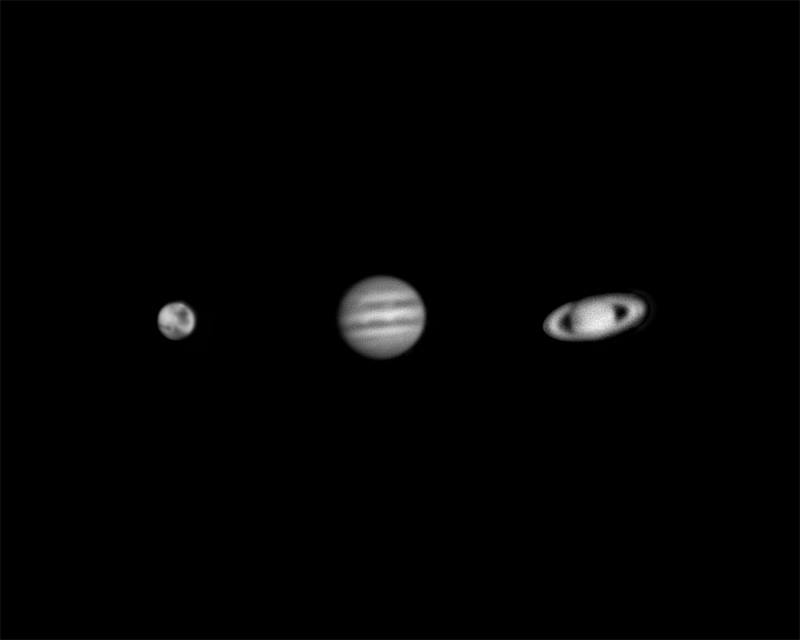A couple weekends ago we were treated to what feels like an unprecedented couple nights in a row of clear sky. Not able to pass up the opportunity I setup my scope in the backyard to take advantage of three planets currently visible in the evening sky. First up, just after sunset Jupiter is visible in the Western sky trailing the Sun. After a little polar aligning and calibration of my scope I slewed over to Jupiter in order to capture a few frames of video. Next up was Mars which is visible rising to the East. With April nights still cool and damp dew was starting to settle on the objective so I slapped on my dew buster, let things clear and started capturing video of Mars. As the evening wore on Saturn began to rise just after midnight. At this point the seeing was starting to get a little undesirable as Saturn could be seen jumping wildly around on my laptop screen. Nevertheless I proceed to capture video of Saturn. After some software stacking and a little tinkering here are the results of that nights observations.
To capture these images I used my Celestron CGEM EdgeHD telescope which has an 8″ aperture along with a 2x Barlow lens and a QHY-5 CCD camera. The first step is to obtain a fairly accurate polar alignment however absolute perfection is not critical since planetary photography does not require long exposure times. Some drift is okay since this can be corrected later while stacking.
Once alignment is achieved I attach my QHY-5 CCD camera since I’ll be taking astrophotos. Next, rather than slew directly to my target I usually choose a star with which to obtain focus. While trying to focus on a planetary disk I find it’s more difficult than a pinpoint of light when viewing a star. I typically use a home made Bahtinov Mask placed over the objective of the telescope and dial in focus while watching the video feed on my laptop. Once everything is in focus I remove the Bahtinov Mask, slew to my target and get ready to capture video frames.
The CCD camera connects via USB to my laptop where I use QGVideo video capturing software. The trick here is to obtain the correct exposure per-frame and QGVideo provides a histogram to tell you exactly what dynamic range your capture falls within. You want the histogram to be as wide as possible so that you capture as many shades of gray as possible. My camera is monochromatic but the same would apply to colour CCD devices. For these photos I captured 5 minutes of video. With that process complete, I ended up with various .avi files ready for stacking in Deep Sky Stacker.


Very nice images David, especially Mars! Well done and thanks for sharing!